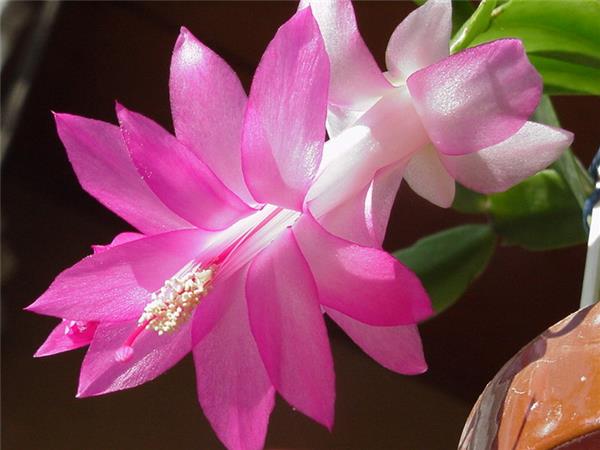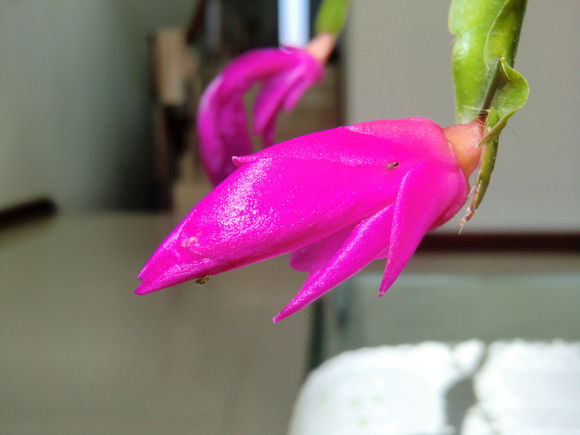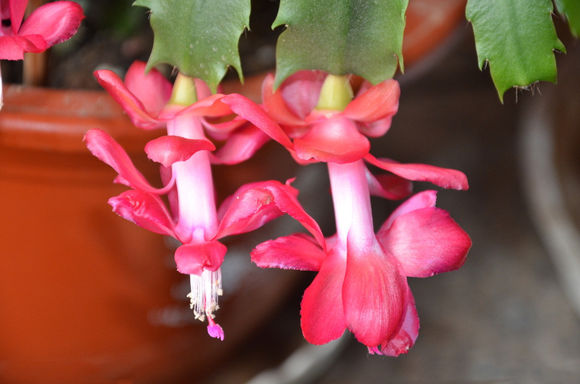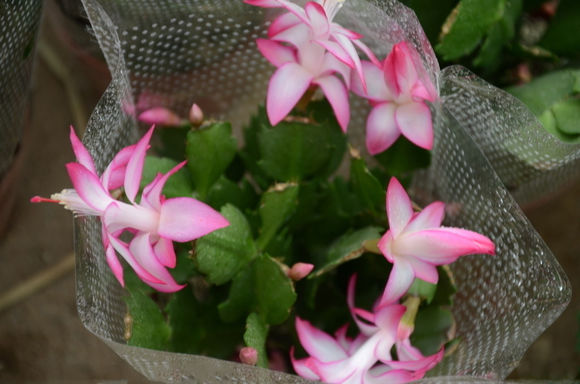What if the hairy crab claw orchid is rotting? how to cultivate hairy crab claw orchid?
Hairy crab claw orchid is actually a relatively easy to feed plant, but many friends in the process of breeding crab claw orchid found that it died because of rotten roots, these are all caused by improper operation in daily maintenance, oh, let's find out.

Culture method of hairy crab claw orchid
Grafting: the rootstock selects full cactus slices, which is buried in the soil when it is put on the pot, and then watered thoroughly after planting. Under the indoor or greenhouse conditions that ensure the temperature, it will take root in about 20 days, and it can be grafted after taking root. The grafting time is the most favorable when it enters the dormant period after anthesis. The scion is huge, usually with 4 or 5 branches, so that after supporting growth and artificial pressure, it can be formed in that year.
Potted soil: potted hairy crab claw orchid requires that the soil is well drained and is rich in humus.
Fertilization: the fertilization of hairy crab claw orchid is mainly carried out in September-October before flowering and April-June in spring after flowering. Fertilization can make its flower buds differentiate in autumn, and it can be fertilized every half a month after getting out of the house in spring. Nitrogen, phosphorus and potassium fertilizers should be matched reasonably, and more phosphorus and potassium fertilizers should be applied at ordinary times, especially when the buds have been formed and the number is large, the amount of fertilizer should be increased constantly to prevent the shedding of flower buds caused by imbalance or lack of fertilizer.
Watering: only a small amount of foliar watering, do not make the flat stem dehydration and wilting, increase heat preservation measures in late autumn, until there are individual stem nodes bud, can be watered as appropriate. After the flower bud of hairy crab claw orchid is formed, the amount of water should not be watered, and the amount of water should be controlled at 80% of the usual amount, and then increase the amount of water after the flower bud opens. Otherwise, too much water in the bud stage will not only cause bud drop, but also cause rotten roots, and even cause stem node shedding.
Temperature: the most suitable temperature for plant growth is between 20 and 28 degrees. After autumn, it can be transferred to a sunny place indoors for breeding. It is best to maintain it at 15 degrees in winter, and it can grow normally at about 10 degrees. When it is below 5 degrees, it will grow poorly, or even suffer frost injury. So we have to let it be exposed to more sunlight on a clear day. It is also necessary to prevent the temperature from rising and falling and how big the temperature difference between day and night is.

Causes and control of root rot of hairy crab claw orchid
1. Overwatering: the rotten root of crab claw orchid is mainly caused by watering too frequently, which is not watered thoroughly, or the drainage of the soil is not good. Anyway, the water content in the soil of crab claw orchid is too high, causing the root system of crab claw orchid to suffocate and rot due to lack of oxygen. In particular, crab claw orchid in the summer semi-dormant state, watering is not well controlled, the most prone to rotten roots.
2. Excessive fertilization: another common reason for the rotting roots of crab claw orchid is excessive fertilization, which will burn the roots. Crab claw orchid does not like fertilizer, especially thick fertilizer, raw fertilizer can not be applied, chemical fertilizer should be applied less, frequently, otherwise the root system can not absorb enough to produce fertilizer damage.

Prevention and control methods:
1. Knock the crab claw orchid out of the basin, cut off the rotten part, and leave it in the ventilated place for 1-2 days. Replant the crab claw orchid in a basin filled with yellow sand and place it in a ventilated and rainless place without watering within 3-5 days, and new roots will grow again from the base of the crab claw orchid root after 10 days.
2. If the crab claw orchid grafted on the cactus, cut off the rotten part with the same method and replant it.
3. If the crab claw orchid has larger plants and more branches and leaves, part of the branches and leaves should be cut off when using the above methods to reduce water evaporation, which is beneficial to rooting. After the crab claw orchid takes root in autumn, it is transferred to normal fertilizer and water management, and it can still bud or blossom during the Spring Festival.

Hairy crab claw orchid colorful, beautiful, bright leaves, especially when grafted in cactus, keel and other plants, can play the effect of each other to enhance the ornamental value, very suitable for the living room, TV, windowsill and other places.
Related
- Wuhan Hospital Iron Tree Blooming Result Was Instantly Frightened by the Gardener Master
- Which variety of camellia is the most fragrant and best? Which one do you like best?
- What is the small blue coat, the breeding methods and matters needing attention of the succulent plant
- Dormancy time and maintenance management of succulent plants during dormancy
- Minas succulent how to raise, Minas succulent plant pictures
- What are the varieties of winter succulent plants
- How to raise succulent plants in twelve rolls? let's take a look at some experience of breeding twelve rolls.
- Attention should be paid to water control for succulent plants during dormant period (winter and summer)
- Watering experience of twelve rolls of succulent plants
- Techniques for fertilizing succulent plants. An article will let you know how to fertilize succulent plants.



